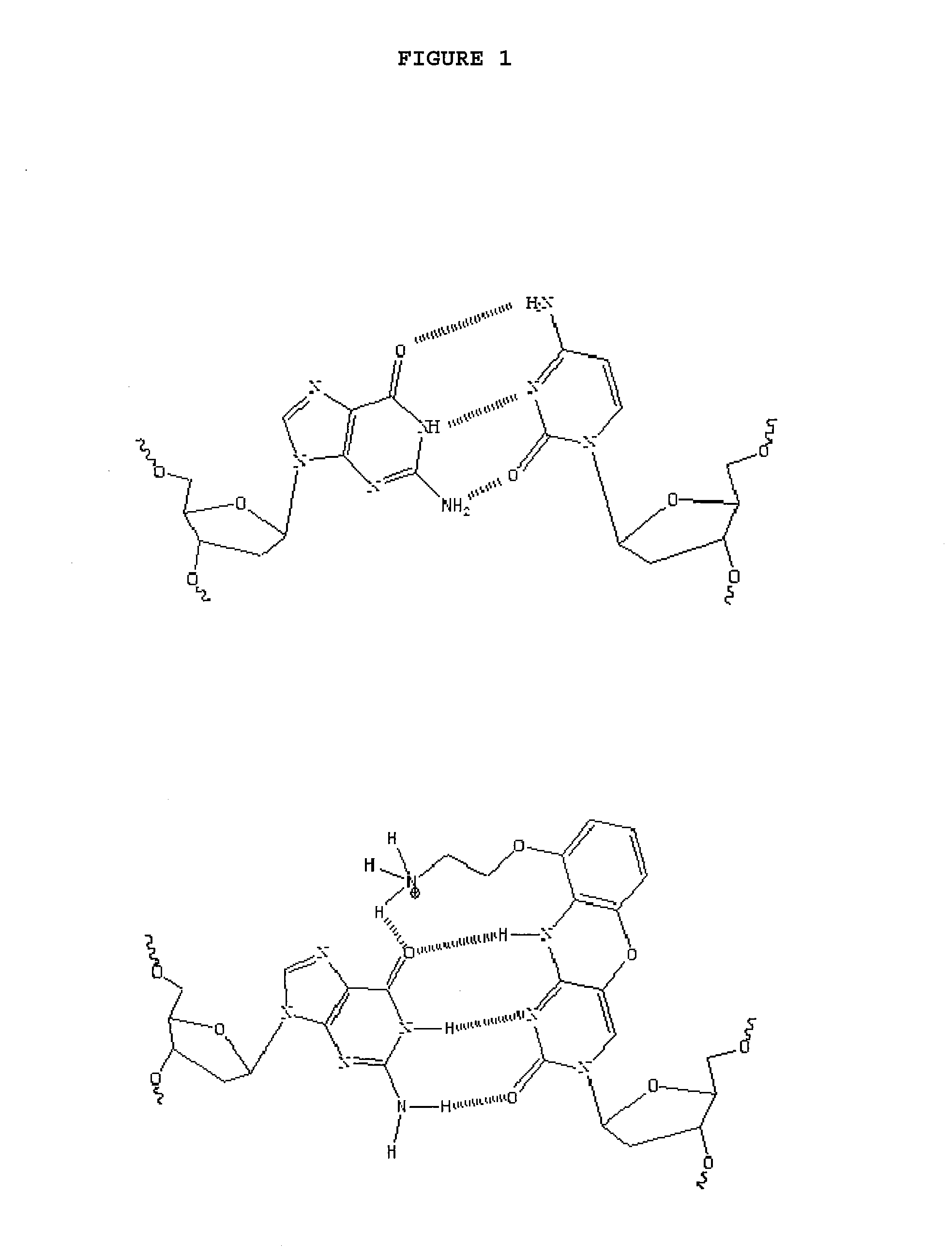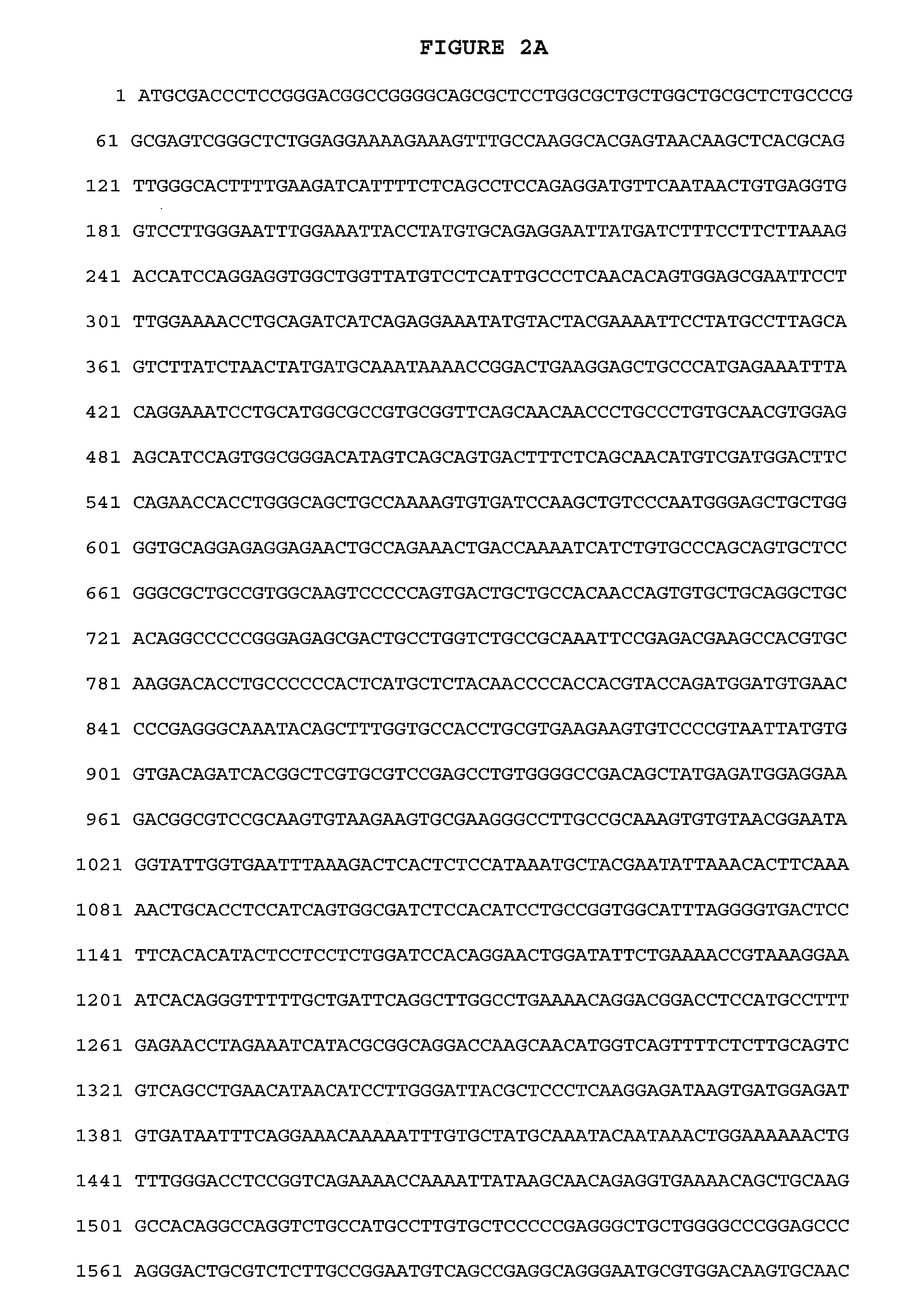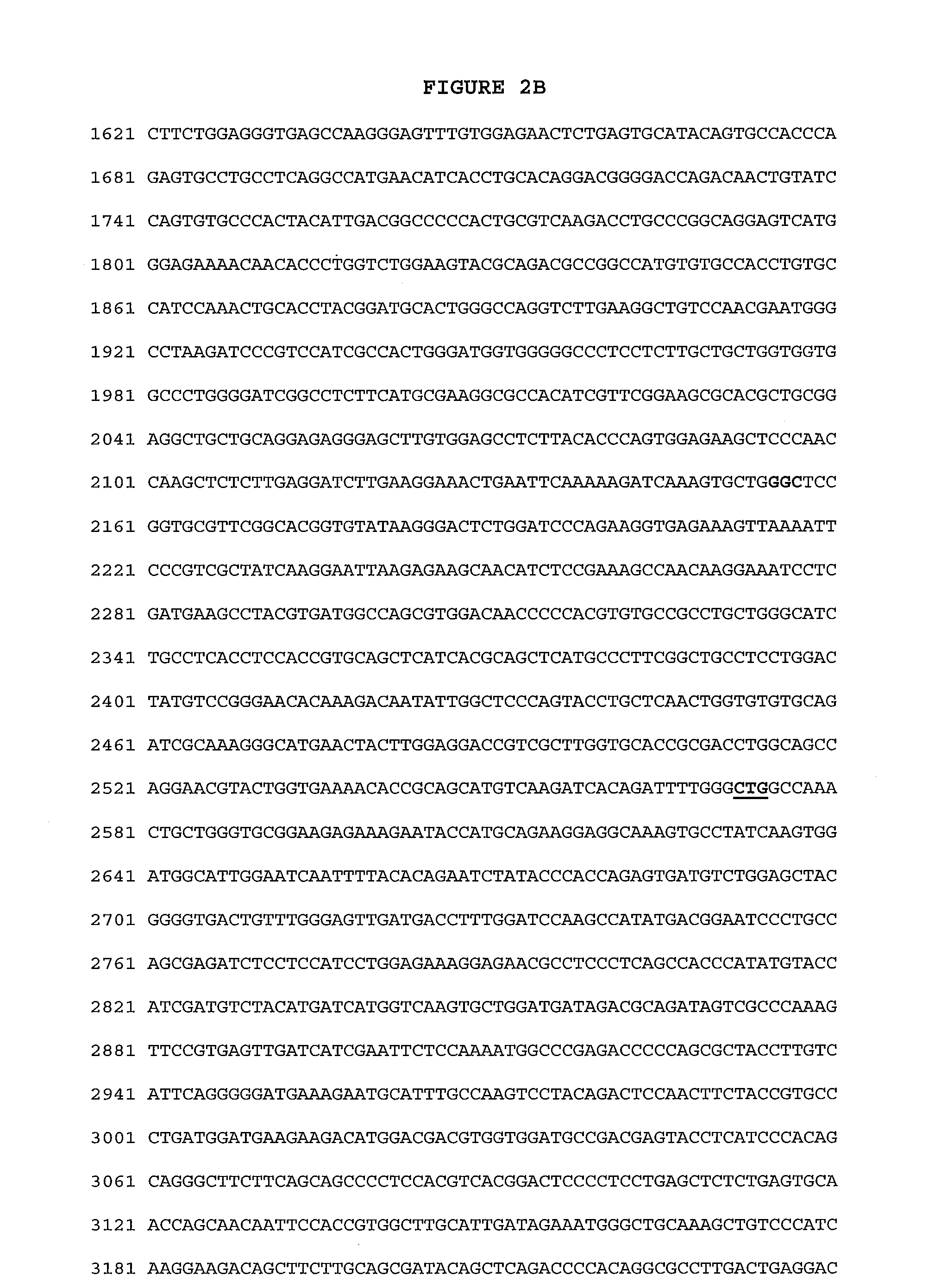Use of G-Clamp for Improved Allele-SpecificPCR
a technology of allele-specific amplification and g-clamp, which is applied in the field of allele-specific amplification, can solve the problems of poor selectivity of allele-specific pcr, 7-cycle delay in amplification of mismatched templates, and insufficient discrimination for many
- Summary
- Abstract
- Description
- Claims
- Application Information
AI Technical Summary
Benefits of technology
Problems solved by technology
Method used
Image
Examples
example 1
Primers for Detecting Mutation L858R in the Human EGFR Gene
[0061]This mutation results from the nucleotide change 2573 T->G in the wild-type EGFR gene (SEQ ID NO: 1). Primers and probes for detecting both the wild-type and mutant EGFR gene (SEQ ID NO: 2) are shown in Table 1. One primer in each amplification primer pair is matched to the mutant variant and mismatched to the wild-type variant at the 3′-terminus. The remaining primer and probe are common to both mutant and wild-type target.
TABLE 1SEQ ID NO: 3GCACCCAGCAGTTTGGCCAWild-type primerSEQ ID NO :4GCGCCCAGCAGTTTGGCCCMutant primerSEQ ID NO :5GCGCCCAGCAGTTTGGCCJMutant primerJ = G-clampSEQ ID NO: 6GCGCCCAGCAGTTTGGCJCMutant primerJ = G-clampSEQ ID NO :7GCGCCCAGCAGTTTGGJCCMutant primerJ = G-ClampSEQ ID NO :8GTCTTCTCTGTTTCAGGGCATGAACCommon primerSEQ ID NO :9FTACTGGTGAAQAACACCGCAGCATGTPProbe: F = threo-FAM,Q = BHQ-2, P = phosphateSEQ ID NO: 10ATGTCAAGATCACAGATTTTGGGCTWild-type primerSEQ ID NO: 11ATGTCAAGATCACAGATTTTGGGCGMutant primerS...
example 2
Primers for Detecting Mutations at the PIK3CA Gene
[0067]One primer in each amplification primer pair is matched to the mutant variant and mismatched to the wild-type variant at the 3′ terminus. The remaining primer and the probe are common to both mutant and wild-type target. Wild-type genomic DNA (K562) present at 10̂4 copies per reaction. Linearized mutant plasmid DNA present at 10̂4 copies per reaction. Mutant plasmids were prepared by 500bp insertion into a pUC19 vector (provided as Minigenes from IDT).
[0068]The primers are non-modified or G-Clamp modified at any base position from N-1 to N-2. In some designs, an additional mismatch is introduced in the primer sequence either at or near the G-Clamp modification site.
[0069]Each 12 μL reaction contained 2.98% glycerol, 50 mM Tris-HCl (pH 8.0), 80 mM KCl, 200 μM each dATP, dCTP and dGTP, 400 μM dUTP, 0.1 μM of forward primer 0.1 μM reverse primer, 0.05 μM detection probe, 2.5% DMSO, 0.02% Pierce Tween 20, 0.036% Sodium Azide, 0.1 m...
PUM
| Property | Measurement | Unit |
|---|---|---|
| pH | aaaaa | aaaaa |
| temperature | aaaaa | aaaaa |
| temperature | aaaaa | aaaaa |
Abstract
Description
Claims
Application Information
 Login to View More
Login to View More - R&D
- Intellectual Property
- Life Sciences
- Materials
- Tech Scout
- Unparalleled Data Quality
- Higher Quality Content
- 60% Fewer Hallucinations
Browse by: Latest US Patents, China's latest patents, Technical Efficacy Thesaurus, Application Domain, Technology Topic, Popular Technical Reports.
© 2025 PatSnap. All rights reserved.Legal|Privacy policy|Modern Slavery Act Transparency Statement|Sitemap|About US| Contact US: help@patsnap.com



